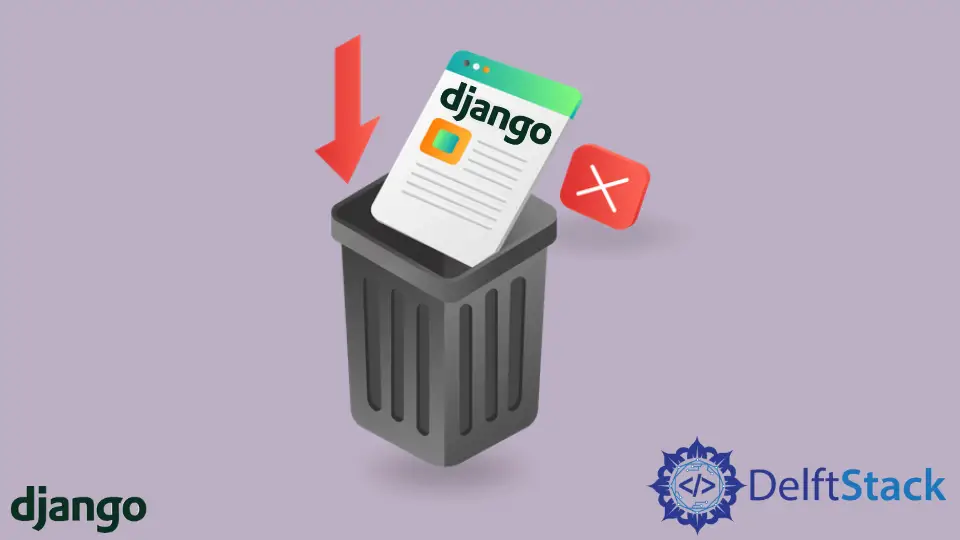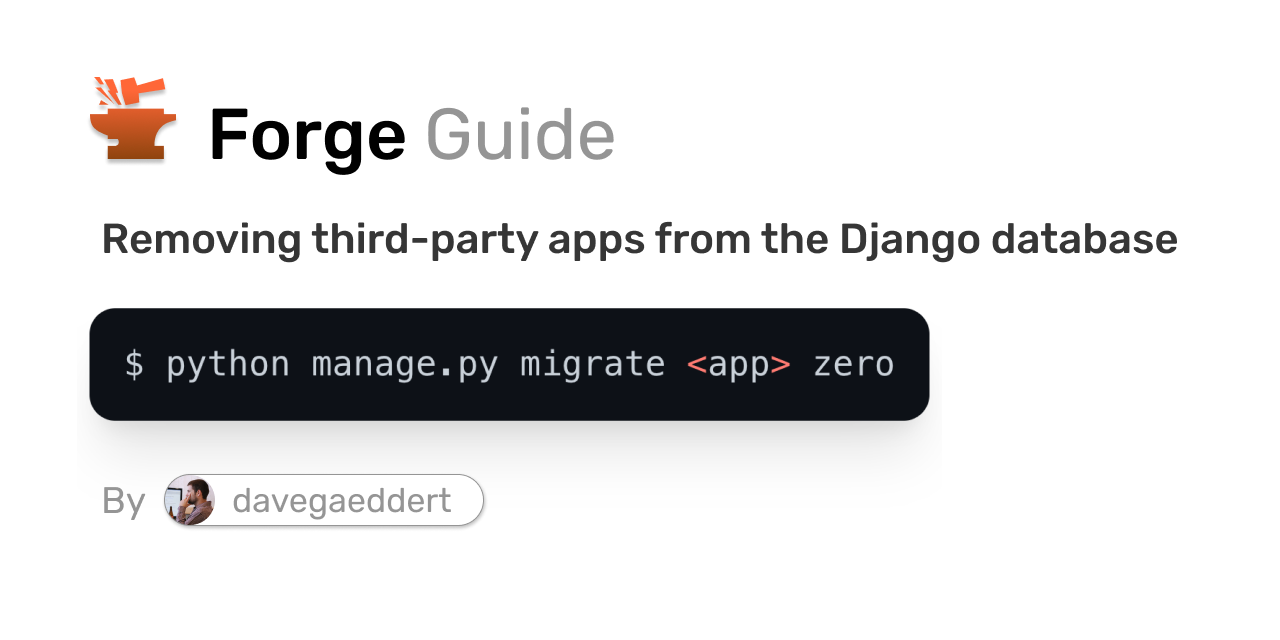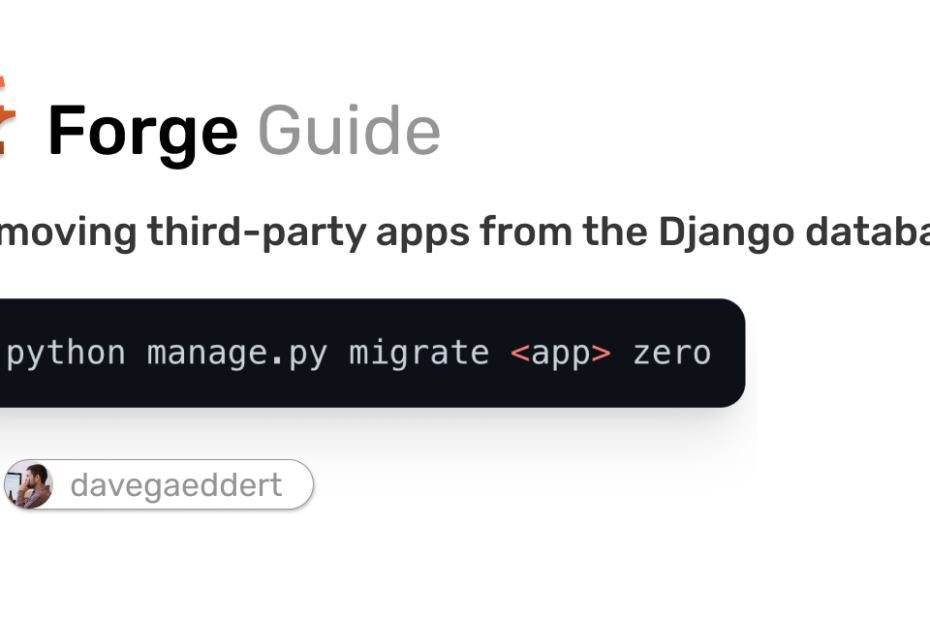You are looking for information on the topic “django remove app from project”. dongtienvietnam.com will gather information to answer your questions in this article. Please read this article to the end to find the information you want to see. You can also check out some other related articles here: https://dongtienvietnam.com/category/wiki/ Delete app Django, Delete django project, Create application in django, Django change app name, Runserver django, Python manage py migrate, Django DROP DATABASE, Rename django project.
View information about the django remove app from project
Information about this question
- Question: django remove app from project
- Time: Askeded 47 hours ago
- Modified: Asked 39 days ago
- View: 6080
django remove app from project
To remove a Django app from a project, follow these steps:
- Remove the app from your project’s
INSTALLED_APPSsetting in thesettings.pyfile. - Delete the app’s folder from your project’s root directory.
- Remove any references to the app in your project’s URL configuration (
urls.py) and other relevant files. - Remove any database tables associated with the app. This can be done using Django’s built-in database management tools like
python manage.py migrateorpython manage.py migrate app_name zero. - Remove any static files or templates associated with the app.
Once you have completed all the above steps, the app will be removed from your Django project.
Watch videos related to “django remove app from project”
Removing a third party Django app and migrations
How to remove admin app from Django?
In Django, removing an admin app involves a few steps. Here’s how you can do it:
-
Remove the app from the INSTALLED_APPS list in your project’s settings.py file. This will prevent Django from loading the app and including it in the admin interface.
-
Delete the app’s directory from your project’s directory structure. This will remove the app’s code and any associated templates or static files.
-
Remove any references to the app in your project’s urls.py file. This includes any import statements and URL patterns that include the app’s views or templates.
-
If the app has any dependencies, make sure to remove them from your project’s requirements.txt file or any other dependency management system you’re using.
-
Finally, make sure to test your project thoroughly after removing the app to ensure that all functionality is still working as expected.
Note that removing an admin app may affect other parts of your project, so make sure to carefully consider the implications before proceeding.
How to uninstall a Django package?
To uninstall a Django package, you can follow these steps:
-
Locate the package name: First, you need to know the name of the package that you want to uninstall. You can find the name in your
requirements.txtfile or in your Django project’ssettings.pyfile. -
Uninstall the package: Once you know the name of the package, you can use pip (Python package manager) to uninstall it. Open your terminal or command prompt and run the following command:
pip uninstall package_name
Replace package_name with the name of the package you want to uninstall. You may need to add sudo before the command if you are on a Mac or Linux machine.
- Verify the package is uninstalled: After running the above command, pip will ask for confirmation before proceeding with the uninstallation process. Once the process is complete, you can verify that the package is uninstalled by running the following command:
pip list
This will display a list of all the packages installed on your system. Make sure that the package you just uninstalled is no longer on the list.
That’s it! You have successfully uninstalled the Django package.
Can a Django project have multiple apps?
Yes, a Django project can have multiple apps. In fact, it’s a good practice to break down the functionality of a large project into smaller, reusable components, each of which is implemented as a separate app.
Each app in a Django project typically represents a distinct feature or aspect of the project. For example, a blogging platform might have separate apps for managing blog posts, user authentication, comments, and so on.
To create a new app in a Django project, you can use the startapp command from the command line, like this:
python manage.py startapp myapp
This will create a new directory called myapp in your project directory, with a default set of files and directories that make up a basic Django app.
Once you’ve created an app, you can add it to your project by editing the INSTALLED_APPS setting in your project’s settings.py file, like this:
cssINSTALLED_APPS = [ 'django.contrib.admin', 'django.contrib.auth', 'django.contrib.contenttypes', 'django.contrib.sessions', 'django.contrib.messages', 'django.contrib.staticfiles', 'myapp',]
This tells Django to include the myapp app in the list of installed apps for your project. You can then define models, views, templates, and other components specific to your app within the myapp directory.
Images related to django remove app from project
Found 29 django remove app from project related images.



Delete app Django
To delete a Django app, follow these steps:
-
Remove the app from the INSTALLED_APPS list in the settings.py file.
-
Remove the app’s URL patterns from the urls.py file.
-
Delete the app’s directory from your project’s directory.
-
Delete the app’s migrations folder located in the app’s directory.
-
Delete the app’s database tables by running the following command:
phppython manage.py migrate <app_name> zero
Make sure to replace <app_name> with the name of your app.
After completing these steps, the Django app should be successfully deleted from your project.
Delete django project
To delete a Django project, you can follow these steps:
-
Delete the project folder: Find the folder containing your Django project and delete it. This will remove all files associated with your project.
-
Remove the project from version control (if applicable): If you’ve been using version control like Git, you should remove the project from the repository.
-
Remove the virtual environment (if applicable): If you’ve been using a virtual environment for your Django project, you can delete the folder containing the virtual environment.
-
Remove the database (if applicable): If you’ve been using a database with your Django project, you can delete the database and its associated files.
-
Remove any other associated files: Depending on how you’ve set up your project, there may be other files that you need to delete as well.
Note: Be careful when deleting files and make sure that you’re only deleting files associated with your Django project and not other important files on your system.
You can see some more information related to django remove app from project here
- How to completely uninstall a Django app? – Stack Overflow
- How to Remove an App from Django Project – Tech Stream
- Completely Uninstall a Django App | Delft Stack
- Removing a Django App – Michael Herman
- How to Remove an App from Django Project – Tech Stream
- Uninstall Django completely – python – Stack Overflow
- Web Applications with Django: Building Multiple Apps in a Project
- Django Best Practices: Projects vs Apps | LearnDjango.com
- Removing third party apps from the Django database – Forge
- Removing app in django 1.11
- [Answered]-How to delete an app from a django project-django
Comments
There are a total of 588 comments on this question.
- 439 comments are great
- 563 great comments
- 154 normal comments
- 137 bad comments
- 74 very bad comments
So you have finished reading the article on the topic django remove app from project. If you found this article useful, please share it with others. Thank you very much.
